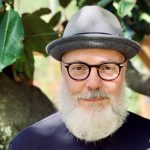Roadside Musings
Chuang Tzu’s Butterfly and Me
When you can no longer distinguish between your waking and dream lives, how do you view your Self? Rabbi Rami shares his thoughts.
Andrea Sherman, a recent guest on the Spirituality+Health podcast, suffers from Rapid Eye Movement Sleep Behavior Disorder or RBD, a disease that makes it difficult for her to distinguish waking life from dream life. Speaking with her and reading her essay "Practices for Shattered Nights" from the May/June 2023 issue of Spirituality+Health made me think of the Taoist sage Chuang Tzu, who dreamed he was a butterfly. When he awoke, he realized he had been dreaming, but then he asked himself: "Was I Chuang Tzu dreaming I was a butterfly or am I really a butterfly now dreaming I am Chuang Tzu?"
This is the kind of question one asks in Philosophy 101. It is not meant to be answered. Its purpose is to trigger a lifelong inquiry into the nature of reality. So, what is the nature of reality? Simply put, there are three possible answers: 1) materialism; 2) idealism; 3) nondualism.
Materialism holds that nature is fundamentally matter and that all things, including things we call nonmaterial, are products of material interactions. Idealism is the exact opposite of materialism and argues that reality consists only of nonmaterial phenomena that somehow create our sense of the material. Nondualism sees matter and spirit as aspects of a greater whole—the way a spoon is both convex and concave depending on how you look at it. I am a nondualist.
I first came to nondualism through meditation. As a student of Zen Buddhism I would sit quietly and simply let my thoughts and feelings arise and fall as they would. I didn’t count my breaths or concentrate on a mantra. I simply sat. Occasionally, I would perceive things as they are without comment. In Judaism “things as they are” is called koach mah, a term that is associated with chochma, wisdom. To be wise is to see things as they are. How are they? Ve’hachochmah may-ayin timatzay: “And chochmah arises out of nothingness” (Job 28:12). What is (yesh in Hebrew) emerges out of emptiness (ayin) and then returns to emptiness again in a never-ending dance of yesh and ayin, being and emptiness. All of this happens in a greater wholeness that is beyond naming.
So, was Chuang Tzu dreaming he was a butterfly, or was a butterfly dreaming he was Chuang Tzu? In other words, is the world fundamentally material and only secondarily spiritual? Or is the world fundamentally spiritual and only secondarily physical? As a nondualist, I think this is a false choice. The world is fundamentally unnamable (the Tao that cannot be named, the Hebrew Name of God—Y-H-V-H—that literally cannot be pronounced), and from this unnamable arises both matter and spirit. Matter and spirit are not opposites but complementaries, each going with the other the way “up” goes with “down” and “in” goes with “out." The universe isn’t a case of either/or but of both/and.
Of course, I could be overthinking the “who” thing:
Years ago, I dreamed of Jikan, the name given to Leonard Cohen by our teacher, Joshu Sasaki Roshi. “Jikan,” I said, “Like Chuang Tzu, I dreamed I was a butterfly. Now that I’m awake I don’t know if I’m Rami who dreamed I was a butterfly or a butterfly who is dreaming she is Rami? How can I tell?”
Jikan said, “Most butterflies die after a couple of weeks. Ask me again in a month.”
Listen to the podcast that inspired this essay here.






